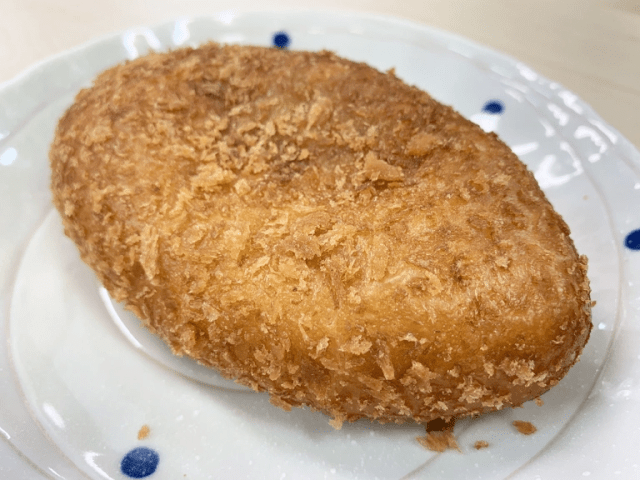
This Tokyo bakery hasn’t changed its curry bread recipe in nearly 100 years, and it doesn’t need to.
There are plenty of historical sites in Tokyo, such as Sensoji Temple, Meiji Shrine, and, of course, the vestiges of Edo Castle, which have been absorbed into the grounds of the present-day imperial palace. But we’re of the mind that the best kind of history is the history you can eat, and thankfully Tokyo delivers on that front too.
In quest to satisfy our hunger for culinary culture, we’ve previously dined at both Japan’s oldest tempura restaurant and also its oldest oyakodon (chicken and egg rice bowl) restaurant, both of which are found in Tokyo. Today, we’re stopping by yet another food history landmark, with a visit to the bakery Cattlea, located in Tokyo’s Koto Ward, near Morishita Station.
Appearance-wise, Cattlea looks pretty much like any other of the countless neighborhood bakeries that dot Japan’s urban landscape. However, you’ll notice a sign in front of the entrance touting its Ganso Curry Bread.
Ganso is the Japanese word for “original,” and while ganso sometimes gets tossed around in marketing talk as a substitute for “old-fashioned,” in Cattlea’s case the Ganso Curry Bread is meant literally, because this was the first bakery in all of Japan to make curry bread, which has since become a staple of bakeries across the country.
When it first went on sale back in the second year of the Showa era, 1927, Cattlea called its creation Yoshoku Bread (“Western cuisine bread”). Right from the start, it was a fist-sized piece of fried bread stuffed with curry, and Cattlea’s present-day bakers still use the exact same recipe, which hasn’t been changed at all in the 90-plus years since.
We bought one to take back to SoraNews24 headquarters, and as the cashier handed us our purchase, we were surprised at how heavy it was. For a second, we thought that maybe Cattlea had generously given us two for the price of one, but nope, inside the bag was a single weighty piece.
So why is Cattlea’s Ganso Curry Bread so heavy? Because unlike a lot of other bakeries’ curry breads, which have a thick outer shell of airy bread and just a dollop of curry at the center, Cattlea’s curry core is vast and voluminous, rewarding you with a veritable flood of curry as you bite into it.
Back at the office, obviously there was a lengthy debate about who should do the taste testing. Eventually, our Japanese-language reporter Seiji Nakazawa convinced us all that he was worthy of the honor, and his thoughts are:
“The curry roux, mixed with carrots, is delicious, and its smooth texture makes for a great contrast with the crisp outer surface of the fried bread.
As I look back on my life, I ask myself, ‘Have I ever had curry bread this delicious before?’
No. The answer is no. This is, without question, the best curry bread I’ve had in my entire life.”
Considering that curry bread is one of those ultra-reliable, even-when-it’s-bad-it’s-still-pretty-good kind of foods, this is high praise indeed. It turns out, though, that there’s a way to make Cattlea’s Ganso Curry Bread even more delicious, which is to stop by the bakery at 7 or 11 a.m., or 3 in the afternoon, which are the three times of day fresh batches come out of the fryer.
▼ Cattlea’s Curry bread time sign
But there’s really never a bad time to get bread this good, and at just 200 yen (US$1.85), there’s also no cheaper time machine to experience something people in Tokyo were enjoying almost 100 years ago just as it was back then.
Bakery information
Cattlea / カトレア
Address: Tokyo-to, Koto-ku, Morishita 1-6-10
Open 7 a.m.-7 p.m. (weekdays), 8 a.m.-6 p.m. (Saturday, holidays)
Closed Sundays
Photos ©SoraNews24
● Want to hear about SoraNews24’s latest articles as soon as they’re published? Follow us on Facebook and Twitter!
[ Read in Japanese ]

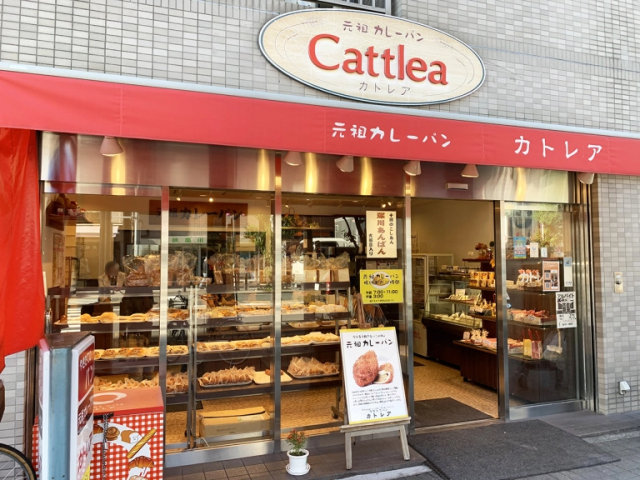
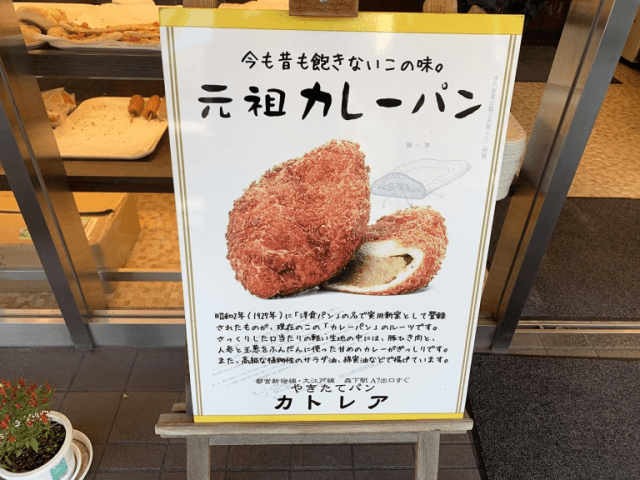

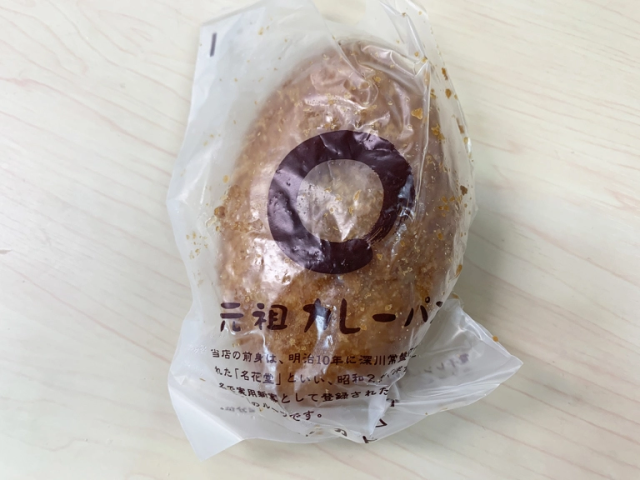
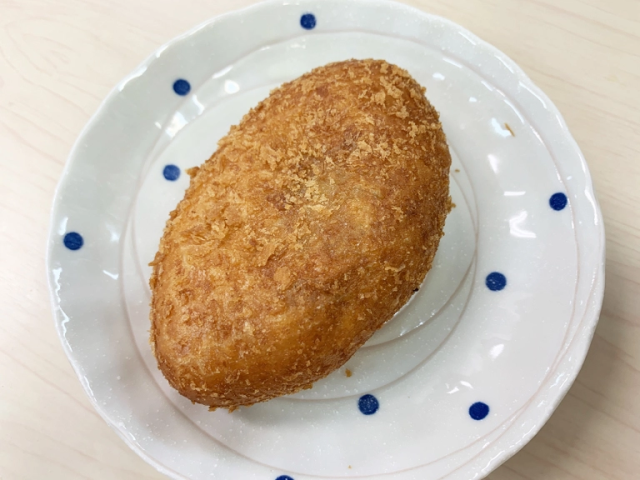


 Japanese bakery’s new Vegan Curry Bread is awesome enough to please even carnivores【Taste test】
Japanese bakery’s new Vegan Curry Bread is awesome enough to please even carnivores【Taste test】 Japan’s favorite curry rice restaurant chain also runs a bakery with more than just curry bread
Japan’s favorite curry rice restaurant chain also runs a bakery with more than just curry bread This Tokyo bakery gives its curry bread a special Aomori ingredient for a one-of-a-kind taste
This Tokyo bakery gives its curry bread a special Aomori ingredient for a one-of-a-kind taste Japan has peanut butter-style spreadable curry, and it’s amazing【Taste test】
Japan has peanut butter-style spreadable curry, and it’s amazing【Taste test】 Curry Bread Cider: A drink with an unforgettable aftertaste【Taste Test】
Curry Bread Cider: A drink with an unforgettable aftertaste【Taste Test】 Disillusionment at Tsukiji’s tourist-target prices led us to a great ramen restaurant in Tokyo
Disillusionment at Tsukiji’s tourist-target prices led us to a great ramen restaurant in Tokyo More Than a Capsule Stay: Why Solo Travelers Choose “global cabin Yokohama Chinatown”
More Than a Capsule Stay: Why Solo Travelers Choose “global cabin Yokohama Chinatown” Back to the Future gets anime/manga artist makeover with chibi Marty and handsome Biff【Pics】
Back to the Future gets anime/manga artist makeover with chibi Marty and handsome Biff【Pics】 Japan’s human washing machines will go on sale to general public, demos to be held in Tokyo
Japan’s human washing machines will go on sale to general public, demos to be held in Tokyo Lacquerware supplier to emperor of Japan and Pokémon team up for new tableware
Lacquerware supplier to emperor of Japan and Pokémon team up for new tableware KFC Japan introduces a new burger 8 years in the making
KFC Japan introduces a new burger 8 years in the making Shimane has a secret hot spring town that feels like stepping into an old Japanese film
Shimane has a secret hot spring town that feels like stepping into an old Japanese film KFC Japan opens a Christmas restaurant in Tokyo…but why???
KFC Japan opens a Christmas restaurant in Tokyo…but why??? Tokyo’s Tsukiji sushi neighborhood asks tour groups to stay away for the rest of the month
Tokyo’s Tsukiji sushi neighborhood asks tour groups to stay away for the rest of the month Want to design your own anime figure and have it shipped to you? Online program lets you do just that
Want to design your own anime figure and have it shipped to you? Online program lets you do just that 7-Eleven Japan starts new temporary luggage storage service in over 300 branches
7-Eleven Japan starts new temporary luggage storage service in over 300 branches Starbucks teams up with 166-year-old Kyoto doll maker for Year of the Horse decorations【Photos】
Starbucks teams up with 166-year-old Kyoto doll maker for Year of the Horse decorations【Photos】 Street Fighter Hadouken Churros to be launched and eaten in Tokyo, Okami pudding on offer too
Street Fighter Hadouken Churros to be launched and eaten in Tokyo, Okami pudding on offer too Japanese woman mistaken for bear
Japanese woman mistaken for bear Return of Totoro sequel short anime announced for Ghibli Park
Return of Totoro sequel short anime announced for Ghibli Park Starbucks Japan releases new zodiac chilled cup drink for 2026
Starbucks Japan releases new zodiac chilled cup drink for 2026 Is this the most relaxing Starbucks in Japan?
Is this the most relaxing Starbucks in Japan? Starbucks on a Shinkansen bullet train platform: 6 tips for using the automated store in Japan
Starbucks on a Shinkansen bullet train platform: 6 tips for using the automated store in Japan Japanese train company is letting fans buy its actual ticket gates for their homes
Japanese train company is letting fans buy its actual ticket gates for their homes Is China’s don’t-go-to-Japan warning affecting tourist crowds in Tokyo’s Asakusa neighborhood?
Is China’s don’t-go-to-Japan warning affecting tourist crowds in Tokyo’s Asakusa neighborhood? Starbucks Japan unveils new Christmas goods and a rhinestone tumbler that costs 19,500 yen
Starbucks Japan unveils new Christmas goods and a rhinestone tumbler that costs 19,500 yen Tokyo considering law requiring more trash cans following litter increase in heavily touristed area
Tokyo considering law requiring more trash cans following litter increase in heavily touristed area Nintendo’s Kirby now delivering orders at Kura Sushi restaurants, but not in Japan
Nintendo’s Kirby now delivering orders at Kura Sushi restaurants, but not in Japan Tokyo event lets you travel back in time, for free, to celebrate 100 years since Showa era start
Tokyo event lets you travel back in time, for free, to celebrate 100 years since Showa era start Survey asks foreign tourists what bothered them in Japan, more than half gave same answer
Survey asks foreign tourists what bothered them in Japan, more than half gave same answer Japan’s deadliest food claims more victims, but why do people keep eating it for New Year’s?
Japan’s deadliest food claims more victims, but why do people keep eating it for New Year’s? We deeply regret going into this tunnel on our walk in the mountains of Japan
We deeply regret going into this tunnel on our walk in the mountains of Japan Studio Ghibli releases Kodama forest spirits from Princess Mononoke to light up your home
Studio Ghibli releases Kodama forest spirits from Princess Mononoke to light up your home Major Japanese hotel chain says reservations via overseas booking sites may not be valid
Major Japanese hotel chain says reservations via overseas booking sites may not be valid Put sesame oil in your coffee? Japanese maker says it’s the best way to start your day【Taste test】
Put sesame oil in your coffee? Japanese maker says it’s the best way to start your day【Taste test】 The top 10 annoying foreign tourist behaviors on trains, as chosen by Japanese people【Survey】
The top 10 annoying foreign tourist behaviors on trains, as chosen by Japanese people【Survey】 No more using real katana for tourism activities, Japan’s National Police Agency says
No more using real katana for tourism activities, Japan’s National Police Agency says Starbucks Japan reveals new sakura drinkware collection, inspired by evening cherry blossoms
Starbucks Japan reveals new sakura drinkware collection, inspired by evening cherry blossoms Japan’s cat bread bakery opening brand-new branch in Osaka Prefecture!
Japan’s cat bread bakery opening brand-new branch in Osaka Prefecture! In celebration of Curry Bread Day, we find out which convenience store has the best curry bread【Taste Test】
In celebration of Curry Bread Day, we find out which convenience store has the best curry bread【Taste Test】 Curry and melon bread! Together…at last? Anyway, Yamazaki’s new curry melon bread is here
Curry and melon bread! Together…at last? Anyway, Yamazaki’s new curry melon bread is here Godiva’s Tokyo bakery finally adds the king of Japanese bread: melon bread!
Godiva’s Tokyo bakery finally adds the king of Japanese bread: melon bread! Tokyo Banana’s Legendary Curry Bread tests the limits of what makes a good karepan 【Taste test】
Tokyo Banana’s Legendary Curry Bread tests the limits of what makes a good karepan 【Taste test】 Kyoto curry bread comes with a very special filling
Kyoto curry bread comes with a very special filling Fried curry cheeseburger?!? Japan’s oldest burger chain creates a new way to get your curry fix
Fried curry cheeseburger?!? Japan’s oldest burger chain creates a new way to get your curry fix Tokyo’s Curry Udon Croquette Burger is four of Japan’s favorite foods in one【Taste test】
Tokyo’s Curry Udon Croquette Burger is four of Japan’s favorite foods in one【Taste test】 Cat-shaped Japanese bread coming to Tokyo!
Cat-shaped Japanese bread coming to Tokyo! Japan’s Egg Curry Pan Sandwich is a bread-on-bread snack that deserves to go viral
Japan’s Egg Curry Pan Sandwich is a bread-on-bread snack that deserves to go viral People in Japan go crazy for bunny bread loaves from new Tokyo bakery
People in Japan go crazy for bunny bread loaves from new Tokyo bakery Where to buy a Curry Bread Grand Prix 2023 award-winning karepan in Japan
Where to buy a Curry Bread Grand Prix 2023 award-winning karepan in Japan A visit to Japan’s adorable cat bread cafe to try their trendy new cat cream bun【Photos】
A visit to Japan’s adorable cat bread cafe to try their trendy new cat cream bun【Photos】 The deluxe disappointment and basic brilliance of Japan’s oldest standing soba noodle chain
The deluxe disappointment and basic brilliance of Japan’s oldest standing soba noodle chain 7-Eleven Japan powers up even more with new baked-in-store breads and pastries【Taste test】
7-Eleven Japan powers up even more with new baked-in-store breads and pastries【Taste test】
Leave a Reply